- Administrator
- Albums and Singles
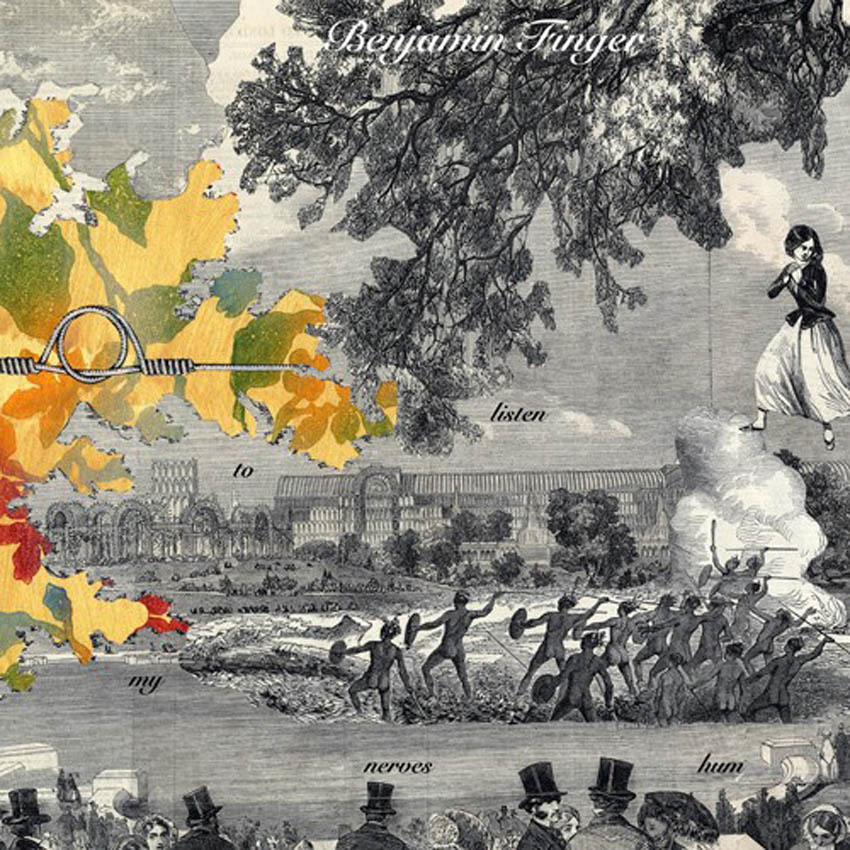 I have been casually following Benjamin Finger's career ever since being completely blindsided by his hallucinatory 2009 masterpiece Woods of Broccoli and I have found it quite perplexing to observe: Broccoli never got even a fraction of the acclaim it deserved and its beat-driven 2011 follow-up (For You, Sleepsleeper) seems to have completely disappeared without a trace.  In a perfect world, this latest effort would redress that inequity (Nerves is Finger's first release on a US label), but Benjamin's current aesthetic has taken quite a curious and challenging turn.
I have been casually following Benjamin Finger's career ever since being completely blindsided by his hallucinatory 2009 masterpiece Woods of Broccoli and I have found it quite perplexing to observe: Broccoli never got even a fraction of the acclaim it deserved and its beat-driven 2011 follow-up (For You, Sleepsleeper) seems to have completely disappeared without a trace.  In a perfect world, this latest effort would redress that inequity (Nerves is Finger's first release on a US label), but Benjamin's current aesthetic has taken quite a curious and challenging turn.
The most succinct and glib way to describe this album is this: Benjamin Finger just bought a piano and seems to be very excited about it.  However, the truth is a lot more complicated and puzzling than that, as Finger has always had a piano and he has employed it quite beautifully in the past as just one small part of his complex, multilayered arsenal.  With Listen To My Nerves Hum though, Benjamin has essentially jettisoned everything else from his palette except for some muted field recordings.  Also, on a deeper level, he seems to have additionally abandoned almost everything he knows about music: on Beneva vs Clark Nova's Sombunall, he showed he could craft great electronic pop songs, then on Woods of Broccoli, he demonstrated that he was even more adept at fragile, sublimely beautiful psychedelia.  With Nerves, he often sounds like an outsider artist trying to channel Erik Satie though real-time improvisations.
While that admittedly seems like a very self-defeating move, it is also a very daring and noble one: all artifice and processing has been stripped away to leave only music at its most naked and organic.  I doubt I ever would have given Nerves a second listen if I had not already been confident that Finger knew what he was doing, but there is definitely something here–it just takes some significant attention to appreciate it, as the album's quiet, unique beauty gradually revealed itself to me more and more with repeat listens.
Most of the best parts occur when well-chosen field recordings unexpectedly make their way into the foreground, like they do in album highlight "Ãno Nuevo Acid Crackers," where the melancholy plinking piano motif is gradually forced to share the stage with the celebratory sounds of a fireworks display.  Most of the time, however, the field recordings are used in much more subtle fashion, lending just a hint of cinematic otherness to Finger's playing (like the footsteps, echoing voices, and crackling French radio broadcast beneath "Das Paris Des Second Empire Benjamin").  Also, the sound of Benjamin's piano is in itself somewhat mesmerizing, as it seems close mic'd in a way that renders every little oscillation and nuance of decay audible.
All of that makes Listen To My Nerves Hum an extremely difficult album to formulate a clear opinion on.  As a listener, I found the album to be a bit exasperatingly one-dimensional and simplistic, as it feels like a series of sketch-like, lo-fi improvisations.  My frustration was amplified by the fact that several individual pieces were quite good and would have been much more striking and emotionally resonant if they had been transitioned to in a more effective and dynamically/texturally varied way–an entire album of monochromatic, minimalist piano tinkling invariably makes my ears very sleepy.  However, as a Benjamin Finger fan, this album is kind of exciting: it is ambitiously uncharacteristic and unexpected, deliciously cryptic, and leaves me with absolutely no idea where he might go next.  Also, the music itself is just one facet of the release-if I had been one of the 70 people to get the limited edition CD version, I would probably be hailing Nerves as an unqualified masterpiece, as it might possibly have the coolest packaging that I have ever seen (it folds out into a strange extinct bird mobile made from antique piano innards).  Which, I suppose, ultimately makes Listen To My Nerves Hum a great installation rather than just a likable, but flawed, album.
(Note: This is a review of the marginally less cool-looking vinyl version, as the hopelessly sold-out "bird mobile" version includes five additional songs)
 
Read More
- Administrator
- Albums and Singles
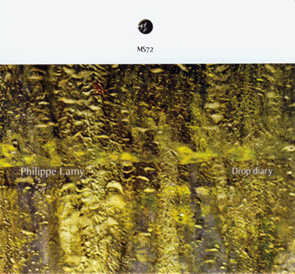 Daniel Crokaert’s Mystery Sea label challenges artists to produce music inspired by and infused with the mystique of "liquid states," whether that means using the sound of amplified water or catching the unpredictable flow of human perception on disc. French musician and painter Philippe Lamy comes at that challenge from both directions on Drop Diary, using the sound of water to focus on the way various environmental and synthetic sounds interconnect. Each piece is stacked with tiny sounds, but the way he weaves them all together gives the album a beautiful, supernatural quality, as open and as alive as the environments used to make it.
Daniel Crokaert’s Mystery Sea label challenges artists to produce music inspired by and infused with the mystique of "liquid states," whether that means using the sound of amplified water or catching the unpredictable flow of human perception on disc. French musician and painter Philippe Lamy comes at that challenge from both directions on Drop Diary, using the sound of water to focus on the way various environmental and synthetic sounds interconnect. Each piece is stacked with tiny sounds, but the way he weaves them all together gives the album a beautiful, supernatural quality, as open and as alive as the environments used to make it.
Lamy treats the sound of water like a constant in his otherwise stream-of- consciousness productions. In some instances it echoes nakedly, in others it drones on almost inaudibly, masked by waves of digital refuse and processed noise. But it’s always there. Philippe pours it into metal pans and glass cups. He captures its fall from branches and awnings during and after a storm, and he records its sibilant singing as it splashes and cuts down streams and over surfaces.
He combines these noises with other environmental and synthetic sounds, forcing his listeners to imagine each element as part of a larger web of events and motions. Those motions propel his music forward and reshape the rigid digital sounds into a less definite, more accommodating state. The crunch of broken glass mingles with a horse trotting down a brick road, which then rubs elbows with the sound of water trickling through pipes, which tumbles into a burst of digital noise before coming to rest in a still room, with a light storm passing by outside.
Lamy presumably took these sounds from places he knows well, and he uses the proximity of those places to arrange the music. He connects horse hooves to lawnmowers to throbbing, Badalamenti-esque synthesizers in a kind of four dimensional sound photo; not because there's a secret narrative running between them, but because these things exist side by side somewhere in France, where the album was recorded. That continuity calls into question whether the spaces Lamy recorded are distinct and individual locations at all, and not artificially determined segments of one uninterrupted space. Is it the sound that flows or does the flowing come from the consciousness that connects all the dots?
As the album progresses Philippe removes many of his sound sources. Instead of tumbling over one another, events start to come one and two at a time. Birds sing in the far distance, insects chirp and buzz with them, the sound of water echoes ever clearer. By the time it’s over, Lamy has slowed time down and reduced the music to an almost meditative hum. As the field recordings intermingle, an exciting sense of scope materializes; a feeling that the very smallest things in the world are all connected, and that something much bigger is waiting just over the horizon.
samples:
 
Read More
- Administrator
- Albums and Singles
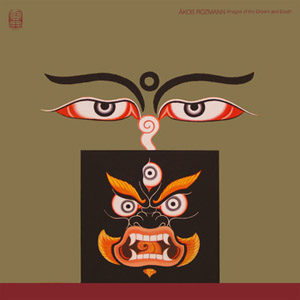 The word "epic" has lost all meaning due to overuse and misapplication in popular culture. Thus when something fits the true definition of that word, such as Images of the Dream and Death, it almost seems pointless to use that as a descriptor. However, spread across three LPs and attempting to capture the never-ending struggle between the two opposing forces of good and evil, with often terrifying results, there is not a more apt term.
The word "epic" has lost all meaning due to overuse and misapplication in popular culture. Thus when something fits the true definition of that word, such as Images of the Dream and Death, it almost seems pointless to use that as a descriptor. However, spread across three LPs and attempting to capture the never-ending struggle between the two opposing forces of good and evil, with often terrifying results, there is not a more apt term.
This version is actually the fourth by Rózmann, with previous ones accomplished with only a Buchla synthesizer or a traditional church organ.While the full instrumentation on this edition is not necessarily clear, there is a definite, and unique use of analog synthesis that can be heard throughout but the sound is far fuller than that.
Split into three thematically linked parts, the A side of the first LP captures Part I and the first half of Part II.The first part is intended to present the types of good and evil in an introduction of sorts, and by Rózmann's own admission, good is presented less than idealistically.Alternating between guttural, monstrous growls and timid, whimpering electronics, the evil archetype is by far the more forceful and commanding beast.
The second part, conceptually presenting various forms and matter, is much more restrained and atmospheric.Quick squeaks and blips of synth are paired with low register groans creaks.It is far more ambient and environmental in comparison to what preceded it, with sustained passages of sound setting more of a mood than the jerky, erratic snarls and whines from the previous segment.
Part III encompasses three and a half sides of vinyl and begins with what sounds like a tolling bell and far off, almost wolf like cries.While it not is intentionally presented as such, this third part works like a final battle between good and evil due to its extreme aggression and jarring sonic turns.Sputtering, almost percussive noises pummel and then retreat, leaving openness that is soon upset by metallic banging and violent banging.
At times the dissonant outbursts are reminiscent of Autechre's most abstract moments, but rather than becoming sustained, it just as quickly falls away to silence, or is upset by terrifying animalistic growls.Even more disturbing, these bestial noises sometimes are muted into an almost heavy breathing like sense of menace.Demonic shrieks and reverberating scrapes alternate with bleak, muted choir like moments, creating a sense of battle that ends, but intentionally does not come to a conclusion.
Trying to put this record into words is a difficult proposition.The concept of using generated, synthetic approximations of "evil" sounds almost cartoonish (ironically enough Rózmann has done sound effect work for animation), but it never comes off that way.In truth, it sounds truly terrifying and unsettling, and its intentionally loose and erratic composition style just exacerbates this even more and makes for one of the darkest, most frightening sounding releases in recent memory.
samples:
 
Read More
- Administrator
- Albums and Singles
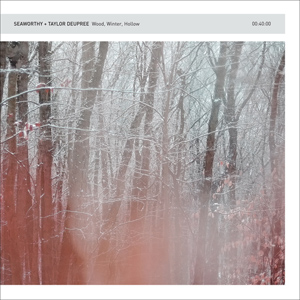 Even though 12k head Taylor Deupree has made it a point in recent years to focus on face-to-face collaborations (as opposed to file swapping), the two most recent products of this have their own distinct sense of isolation and loneliness to them. With Cameron Webb's Seaworthy, it is literal: the record perfectly captures the feeling of being alone in the woods with only an acoustic guitar present. With legendary artist Ryuichi Sakamoto, it is more of an implied, intimate and hushed loneliness via muted tones and extended ambience.
Even though 12k head Taylor Deupree has made it a point in recent years to focus on face-to-face collaborations (as opposed to file swapping), the two most recent products of this have their own distinct sense of isolation and loneliness to them. With Cameron Webb's Seaworthy, it is literal: the record perfectly captures the feeling of being alone in the woods with only an acoustic guitar present. With legendary artist Ryuichi Sakamoto, it is more of an implied, intimate and hushed loneliness via muted tones and extended ambience.
Wood, Winter, Hollow is the most organic and stripped down of these two projects, with untreated field recordings interspersed between the three long pieces.Recorded during the winter in a New York nature reserve after Hurricane Sandy, the constant sound of snapping branches conjures the disarray of the area perfectly.With the absence of animal life due to the season, there is a cold isolation prominent throughout.
These recordings make their way into the three compositions reflected in the title."Wood" sounds like riverside recordings, with heavy emphasis on acoustic guitar that may have only the slightest of processing and treatment to them.The electronic influence is a little more prevalent on "Winter", with some ever so slight pitch bending and intentional digital clipping to offset the guitar.What might be a soft passage of electronics (or electronically treated organic instrumentation) cautiously underscores everything, even when it ends in an uncharacteristically lo-fi collapse.
"Hollow" turns up some bells to be paired alongside the guitar, with what may be actual analog synths making themselves known, even with the more aggressive field recordings.The latter moments become surprisingly raw and chaotic, given the otherwise restrained nature of the album, but then end in a quiet, tranquil moment.
samples:
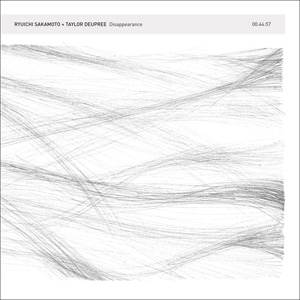
Disappearance, Deupree’s collaboration with Sakamoto, is more of a studio product, and unsurprisingly has some obvious, untreated piano playing.However, at times the notes are just as important as the sounds surrounding them, such as the varying registered tones of "Jyaku," which are interspersed with what sounds like in-studio found sounds and organic movements.
The sparseness is upset by bits of digital interference and more monolithic, expansive tones on "Frozen Fountain," which manages to be simultaneously rich, yet sparse in its overall composition.Buzzing strings and a delicate, churning textural foundation on "Ghost Road" are a perfect fit for the title, conjuring a sense of passing spirits in the distance.
"This Window" in some ways feels like a subtle reference to the Wood, Winter, Hollow with its sounds feeling like an isolated, chilly forest, albeit underscored by a piano flourish.Slowly, but steadily, it transitions from frigid, gale winds into a rich passage of tone and an inviting warmth.
Ichiko Aoba makes an appearance on the long closer "Curl to Me," with her heartbeat becoming the rhythmic foundation.Filtered rising and falling tones and elongated, stretched out tones make for a beautiful, yet isolated experience, with the heartbeat feeling like the only organic elements to be had.Aoba's vocals appear too, and they are so slow and faint they are almost imperceptible, but work perfectly given the intimacy of the song.
I was impressed with the moments on Wood, Winter, Hollow in which things took on more clearly dissonant, low fidelity turns, but as a whole Disappearance is the richer experience for me.The guitar and field recordings on the former is a bit too rooted in Deupree's comfort zone, so I was pleased to hear his distinct, light touch given to an album that sounded a lot different than his recent works, which is the case with Disappearance.Both, however, are exemplary, yet significantly different albums of minimalist brilliance.
samples:
 
Read More
- Administrator
- Albums and Singles
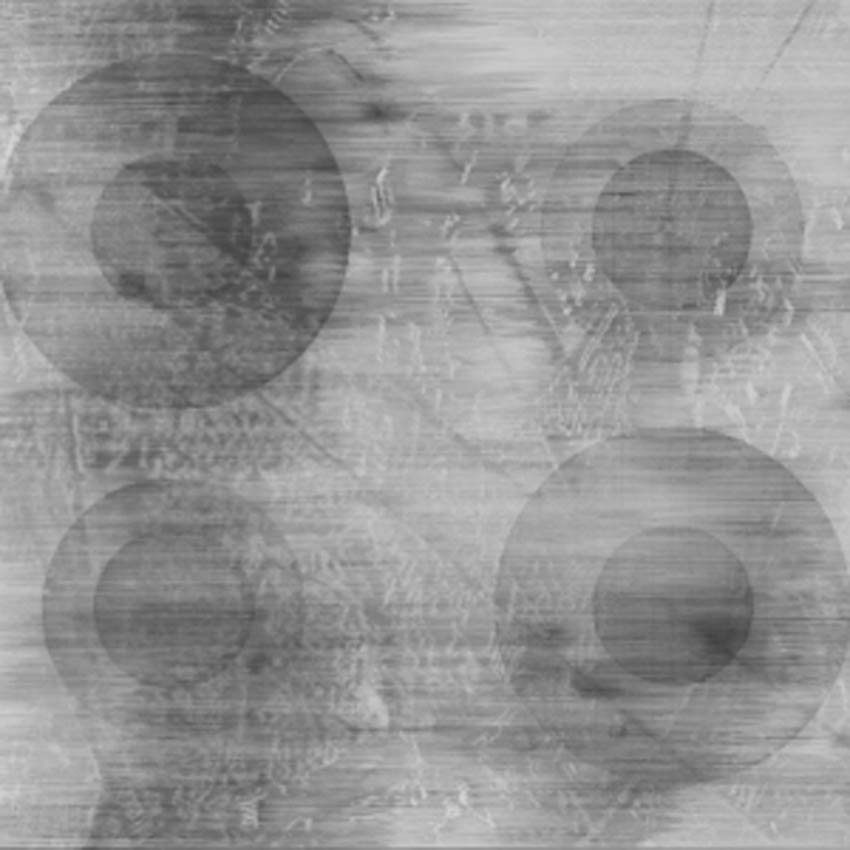
Catherine Christer Hennix has certainly had a very curious career, to say the least: she worked at MIT's Artificial Intelligence lab in the '70s, was a research professor in mathematics at SUNY New Paltz, studied with Pandit Pran Nath and LaMonte Young, collaborated with Henry Flynt, and made some singularly challenging and adventurous music that somehow never got formally released until her 1976 performance of The Electric Harpsichord was finally issued by Die Schachtel in 2010.  Now in her mid-60s, Hennix has beautifully capitalized on the belated interest in her music to become the reigning queen of deep, Eastern-influenced drone.  This latest release is not a far cry from last year's fine Chor(s)san Time-Court Mirage album, but it is every bit as good (if not better).
I must admit that I was pleasantly wrong-footed by Hennix's current direction after being initially exposed to her through the somewhat maniacal and sinister-sounding The Electric Harpsichord, as she now sounds like a completely different artist.  Of course, that makes perfect sense, given that over 30 years separate the recordings and that none of the evolution that occurred between them was ever formally documented or released.  Also, neither this nor the Chor(s)san album are solo endeavors: for Svapiti, Hennix is rejoined by Chor(s)san vocalist Amelia Cuni, as well as new collaborator Werner Durand (credited with "invented wind instruments" and "drones").
Given that Svapiti is about as "drone" as music can get, it might seem like Durand played a very dominant role in the album, but the trio's contributions are so blurred together that it is often impossible  to tell who is doing what.  In any case, the crux of the composition seems to be a gently quavering, hazy, and layered bed of Hennix's vocals accompanied by a steadily buzzing sitar or tambura drone.  In fact, for long stretches, that is all there is (the piece clocks in at nearly an hour).  The beauty lies in the details and the transitions, as the trio gradually embellish their hypnotic thrum with Durand's viscerally breath-like and stuttering wind instruments, as well as Cuni's increasingly prominent and ritualistic-sounding chants (which take their inspiration from Indian classical singing).
Svapiti also steadily grows in density and power as it progresses, but does so in an impressively organic and slow-burning manner.  The most prominent change is the introduction of some deeper wind instruments, which unpredictably blurt and throb rather than languorously drone.  Also, some of the higher-pitched wind instruments begin to swirl together to create a roiling, dissonant miasma that dissipates almost as quickly and unexpectedly as it came together.  That is ultimately the piece's harshest moment, but a few other surprises gradually emerge from Svapiti's ebb and flow as well, the most memorable of which is a juddering, burbling interlude of Cuni's heavily processed vocals.
While Born of Six definitely take quite a bit of their direction, as well as their name*, from Indian classical music, there is actually a bridge that links Svapiti to The Electric Harpsichord—the use of Just Intonation.  I imagine that there are also quite a lot of deeper philosophical and/or behind-the-scenes structural concepts linking them as well (Hennix is big on that sort of thing), but the two albums are as different as night and day from a listening perspective.  Consequently, it is very hard to contextualize Svapiti within Catherine's (very limited) discography.  It is also a bit reductive to even classify this album as "drone," as it is prone to some rather jarring, strangled, and somewhat abrasive passages that occasionally push the piece into somewhat challenging and nerve-jangling territory (a trait shared by labelmate Pauline Oliveros' recent work as well).  The important thing, however, is that it is all very good (which it is).  The Electric Harpsichord probably remains the most bracingly original and essential release in Hennix's oeuvre, but Svapiti deserves a place of honor for presenting her distinctive vision in a much more listenable way.
(*"Born of Six" refers to the Vedic sage Narada's assertion that the tonic note originates from a combination of nose, throat, chest, palate, teeth, and tongue.)
 
Read More
- Administrator
- Albums and Singles

Interbellum "This was an important place in their lives"
FSS 022 CD / Digital Album
Release Date: Oct. 14, 2013
Brendan Burke details the inspiration for the new Interbellum album thusly:
I moved into a new apartment in the same building. A family with two small children had been living here for several years previously. The textured wallpaper in the bedrooms has all these "sun shadows", where art and pictures had previously hung. These spots are much darker than the other spots on the wall, and so they form rectangular areas that are easily discernable and where other people's memories and things used to be. To me, that's sort of an interesting thing.
From the initial bass dredging on “Some Rather Poor Advice,” it is evident that layers of static and disruption have been woven into Burke’s plangent melodies. A palpable sense of absence, loss and contradictory discovery are expressed across This was an important place in their lives.
This Was an Important Place In Their Lives is the second Interbellum album and the first completely realized by Burke alone. It is being released in a limited edition of 200 CDs packaged in Cortland linen weave photo folders with a photographic print and as a download.
These compositions subtly weave thorny electronic treatments into a slow-burning exchange of melody between the two performers, ensuring that the lyrical, thoughtful instrumentation never spills out into cumbersome sentimentality. Excellent, and highly recommended. Boomkat
Music to play on end on a long winter day. Vital Weekly
…the overall drifting experience is that of pure musical exploration. Throughout the album, the sound vibrates, travels, and floats in and out of our peripheral hearing, until the slightly audible voice becomes almost coherent, only to drown again in the harmony of bowed and struck strings, which flips between the major and minor scales, like a child laughing through the tears after a fall. Headphone Commute=
Track Listing:
1) Some Rather Poor Advice 2) I Wish You Hadn’t Done That Richard 3) We Are All Micromentalists Now 4) He Looked Beyond My Faults (and Saw My Need) 5) Cayo Costa
Read More
- Administrator
- Albums and Singles
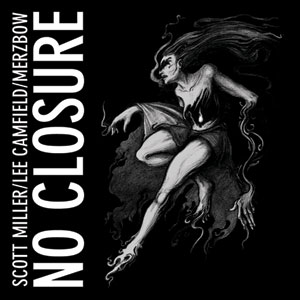
Artist: Scott Miller / Lee Camfield / Merzbow
Title: No Closure
Catalogue No: CSR185CD
Barcode: 5060174955426
Format: CD in jewelcase
Genre: Noise / Industrial / Experimental
Shipping: 30th September
“No Closure” is the collaborative output of ex-Sutekh Hexen members Scott Miller and Lee Camfield, with Japanese noise mastermind, Masami Akita, aka Merzbow. Mixing elements of psychedelia, black metal, doom and industrial music, the three musicians created a spellbinding work of experimental art.
Conceptually crafted in a dark basement recording studio in the Mission District of San Francisco and later fleshed out in Tokyo, Japan, Miller, Camfield and Akita have completely pushed the boundaries of sound far beyond their individual comfort zones. With the implementation of standard instruments being force fed through loop pedals and precise layering, multi-instrumentalists Miller and Camfield set out to build an album rooted deep in the exploitation of intentional rhythms and deliberate patterning.
Through their use of guitar, bass, drums, organs, synths and vocals, purposely devoid of their usual feedback drenched and oscillator projections, they left the inevitable incorporation of varied sound manipulation and textures strictly to Akita, thus giving birth to these two tracks. A 44 minute long masterpiece of epic mind warping experimental composition.
Tracks:1. I (20:00) / 2. II (22:00)
Read More
- Administrator
- Albums and Singles

Artist: Troum
Title: Syzygie
Catalogue No: CSR183CD
Barcode: 5060174955433
Format: CD in jewelcase
Genre: Drone / Dark Ambient
Shipping: 30th September
Formed by Glit[S]ch and Baraka[H] in 1997, Troum rose from the ashes of Maeror Tri. The duo create unbearably beautiful drones, multi-layered transcendental noise, and highly atmospheric dream-muzak.
Syzygie: Zusammenkunft und Gegenschein zweier Planeten, or: an antithetic relationship between (personified) beings of the spiritual world and their shadows.
A collection of rare / deleted tracks from compilations Vol. II (1999-2002). Everything recorded by TROUM between November 1999 and May 2002 on analogue 8-track. 9 meticulously crafted tracks, carefully compiled by Troum and delicately remastered by Martin Bowes (Attrition).
Cold Spring will release the brand new studio album from Troum in 2014.
Tracks: 1. Ater / 2. Makaria / 3. Ganymed / 4. Fantauma / 5. Uegh[Cunabula] / 6. S’engourdir / 7. Khan-Arachnid / 8. Wit Wists Fra-Qistjan / 9. Thrausmata Enos Oneirou
Read More
- Administrator
- Albums and Singles
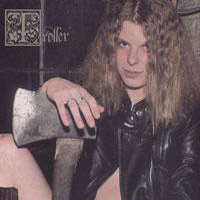 Troller's debut album is the perfect example of the imagery not matching the music. The late 1980s metal woman on the cover and script font screams some sort of early thrash revival, when the album contained is actually a lush, bleak piece of electronics heavy death rock from this Austin, Texas trio. The result is a disc that definitely feels rooted in that era of smeared mascara and smoke machines, but with a clearly modern day sensibility.
Troller's debut album is the perfect example of the imagery not matching the music. The late 1980s metal woman on the cover and script font screams some sort of early thrash revival, when the album contained is actually a lush, bleak piece of electronics heavy death rock from this Austin, Texas trio. The result is a disc that definitely feels rooted in that era of smeared mascara and smoke machines, but with a clearly modern day sensibility.
Holodeck/Light Lodge (LP)/Handmade Birds (CD)
The six main songs that constitute this album (with four instrumental passages between them) all work from a similar template:sluggishly paced drum machine, distorted bass guitar, complex, effects heavy synths and distant female vocals.Even though there is that similarity from one to the other, the songs all stand out unique on their own and never blend together.
"Tiger" is all slowly clapping drum machine and fuzzed out bass, but the lead here is the synth, with the vocals buried amidst the two like any other instrument would be."Milk" instead emphasizes the bass, with the keyboards twinkling away farther off in the mix.Again the voice is buried, cold and emotionless, but in the most effective way.
The strongest songs are the ones that put emphasis on the writing and structure rather than just the mood and texture."Best" is overall more spacious, with the surging bass guitar and synths underscoring the more vocal-centric performance.The vocals are still buried and low in the mix, but it feels more like the driving force here, rather than just another sonic element.
The same goes for the almost upbeat feeling, keyboard lead "Winter," which has a faster pace and again showcases the singing, although here I desperately wanted to turn the vocal track up louder than it was.The closing "Peace Dream" may not be as spryly paced, but is instead more gauzy and ethereal, rather than the bleak, occasionally oppressive sounds that preceded it.
Shades of The Cure's Faith are abundant on Troller's debut, and for my ears that is a great thing.There is that sameness that could possibly wear thin over a greater span of time, but it stays strong here.The best moments are the ones where the trio delves more into pop approaches rather than the meditative, textural pieces that are also here.Those interstitial bits also add to the record as a whole, and make the actual songs all the more effective, making for a promising introduction to the band.
samples:
 
Read More
- Administrator
- Albums and Singles
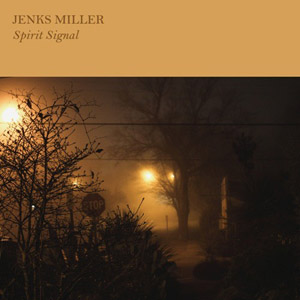 Splitting most of his time between his blackened southern rock behemoth Horseback and playing guitar for the alternative country Mount Moriah, Jenks Miller has not had much time to record true solo work. Spirit Signal is technically his third solo release, following Approaching the Invisible Mountain and the intentionally difficult Zen Automata Volume One, and is comparatively a more fleshed out album in the traditional sense, while still retaining a distinct stripped down, truly solo sound.
Splitting most of his time between his blackened southern rock behemoth Horseback and playing guitar for the alternative country Mount Moriah, Jenks Miller has not had much time to record true solo work. Spirit Signal is technically his third solo release, following Approaching the Invisible Mountain and the intentionally difficult Zen Automata Volume One, and is comparatively a more fleshed out album in the traditional sense, while still retaining a distinct stripped down, truly solo sound.
The six pieces on Spirit Signal were recorded in only three single day sessions, with seemingly few, if any overdubs.Compared to his other work, here Miller emphasizes his guitar work, as opposed to the electronics that defined Zen Automata.Both "Slide Guitar Improvisation in a Blues Style" and "Slide Guitar Improvisation in a Noise Style" are completely self explanatory works, with the former sounding a bit more traditional and the latter not quite as much noise as it is free improvisational in nature.
The brief "By the Haw" clocks in at a hair under two minutes, yet makes for an strong combination of what sounds like noisy field recordings and harmonica.It is so simple, yet results in a chilling song that conjures up a sinister, dark night in a southern forest.The title track and "Through the Fog" make for a clear pairing, both being untreated guitar playing over a droning organ passage.It again has a loose improvisational feeling, but in a very organic, inviting manner as opposed to a raw or dissonant sound.
Half of the album is made up of the nearly 22 minute "Miró," which is the closest to the Horseback project that this album gets.It keeps the sparse, bluesy guitar sound of the preceding pieces, heavily tremolo-ed but played both clean and distorted.It harkens back to the less structured, more obtuse early Horseback recordings in its stanch cyclic minimalism, even featuring vocals that are distant and moaned rather than Miller's usual demonic shrieks.
While I admittedly have been a big fan of Miller's pushing of Horseback toward more conventional structures and sounds, it was refreshing to hear him reach back to where he began.With Spirit Signal, he is producing a distillation of some of his influences, namely blues, free improvisation, and Tony Conrad influenced minimalism.It is less immediately engaging, but makes for a slow build, with everything coming together powerfully after a few spins.
samples:
 
Read More
- Administrator
- Albums and Singles
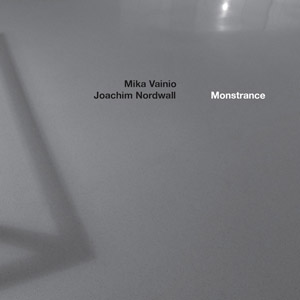 The name of the game is "metal" for this collaboration between Vainio (Pan Sonic) and Nordwall (Skull Defekts, Sons of God), both in the genre and literal sense. Fragments of Sunn O)))'s deconstructed riffs, plate reverbs and Einsturzende Neubauten's earliest days all show up here, in a wonderfully cohesive, oppressively dark recording that is surprisingly organic, given all its metal trappings.
The name of the game is "metal" for this collaboration between Vainio (Pan Sonic) and Nordwall (Skull Defekts, Sons of God), both in the genre and literal sense. Fragments of Sunn O)))'s deconstructed riffs, plate reverbs and Einsturzende Neubauten's earliest days all show up here, in a wonderfully cohesive, oppressively dark recording that is surprisingly organic, given all its metal trappings.
The long "Alloy Ceremony" is where the genre of metal is at its most overt. Dark bass guitar rumbles and resonating noises insinuate what eventually comes forth: an overt guitar part, with nearly Tony Iommi riffs. Rather than Sunn's monolithic repetitive style, it instead more varied and dynamic. The notes are spaced out over the robotic bassline, and eventually transition to a more improvised, grinding style that recalls the best of Big Black.
Beyond this, the guitar is more understated, reappearing as tortured outbursts on "Live at the Chrome Cathedral," amidst roaring electronic and nasal noise surges, leading to a monolithic wall of noise. There is a bit of fragmented six string playing on "Promethium" as well, as scrapes and plucks, coupled with the more sparse and open mix it sounds more free improvisation than metallic in nature.
Metal as an instrument is more noticeable on "Midas in Reverse," which processes scrapes and grinding noises into a collage-heavy mix riddled with ghostly noises that appear all around. On "Irkutsk" it is far more obvious, in the forms of banging and clattering noises over a basic bass guitar rhythm, reminiscent of Neubauten's earliest, most dissonant work. Which makes quite a bit of sense given this album was recorded in the legendary band's own Berlin studios.
On "Praseodymium," things are a bit lighter, even with the distended passages of feedback and hollow, metallic noises. What almost resembles a xylophone can be heard, and the greater emphasis on the midrange sonic spectrum gives it a more distinct warmth than most of the other compositions here. Similarly, "In Sheltering Sanctus of Minerals" closes the album in a drastically different mood than "Alloy Ceremony" opened it. Perched atop a low end, resonating organ, the piece is far more about sustained tone and almost hints at melody at times. Bits of feedback slowly rise to the surface, but never become too much, ending Monstrance on a more pensive, contemplative note.
Not a light recording by any means, Monstrance is an intense, rumbling piece of jagged metal that, even in its lighter moments is unsettling and uncomfortable. But despite its iron trappings and serrated surges of noise, it is indisputably organic, a sensibility that is rarely associated with Vainio's output. It comes across as natural though, and results in this bleak, moody recording that excels in its darkness.
samples:
 
Read More

